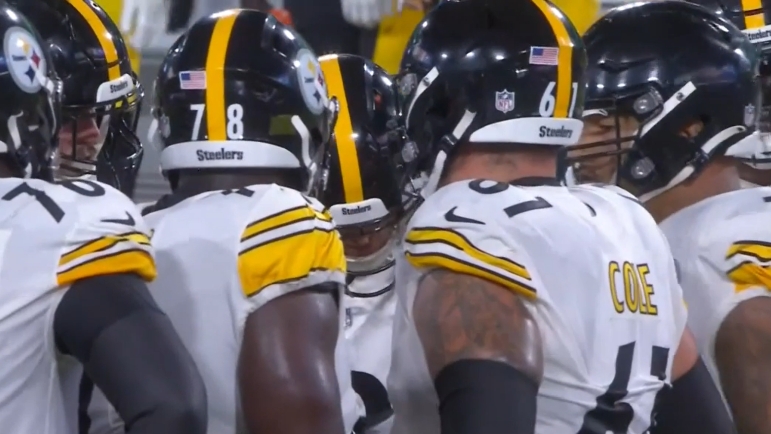While the Pittsburgh Steelers’ offense struggled this season, one of the bright parts of it was their offensive line. Initially thought to be the biggest weakness of the unit, the offensive line turned out to be an asset to the team, partly due to the acquisitions of center Mason Cole and guard James Daniels. However, Cole still believes the offensive line unit has room to grow.
Today, Cole sat down with Dale Lolley of Steelers.com and reviewed the season, and discussed what he is looking forward to next year. Speaking on the surprisingly impressive offensive line group, Cole said the unit still needs to get better next year, focusing specifically on cleaning up the issues they had with penalties this year.
“I think we just have to be at a better operations, I think,” Cole told Lolley. “I think our procedural stuff has to go. We can’t have offsides, we can’t have too many penalties. We saw that, especially early the year, we’re getting behind the chains and then we’re really bad on third down. That’s because you’re on 3rd and 15, half the time, not 3rd and 6. But, as you operate efficiently as an offense usually good things come with it and I think that that should be our focus going into next year.”
On the season, the Steelers’ offense racked up 31 combined penalties of offensive holding and false starts. Penalties that set a young offense back five to ten yards depending on which one is called. For an offensive that was not explosive, that was too much to overcome.
Cole talked about how the offense was much worse with their penalties early in the season and the numbers back it up. In the first eight games, the Steelers committed 28 offensive penalties for 200 yards. They averaged 25 penalty yards against themselves per game. In their final nine games of the season, the Steelers committed only 20 penalties for 125 yards, only averaging 13.8 penalty yards against per game.
For Pittsburgh, that low number of only 13.8 number was enough to allow a slow-moving Steelers offense to work and win seven of their final nine games. When they were averaging 25 penalty yards against per game they only won two games.
When you have a dynamic offense that can tear off chunk plays like nothing, penalties can be overcome easier. When you have an offense that averaged only 4.9 yards per game, less than the amount of yardage of a false start penalty, overcoming penalties become a lot more difficult.
If Pittsburgh’s offense doesn’t become much more dynamic next year, it will be extra important for Mason Cole and his offensive line-mates to make sure they keep their penalties to a minimum. It could be the difference between wins and losses.








